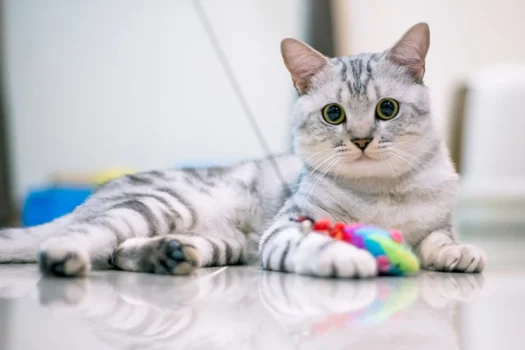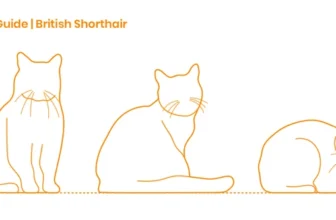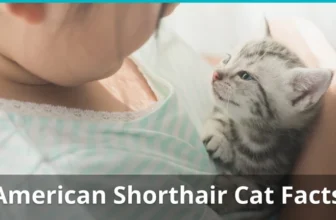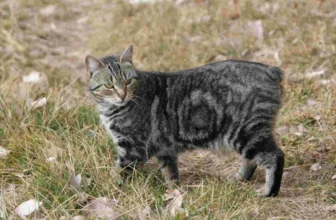Introduction
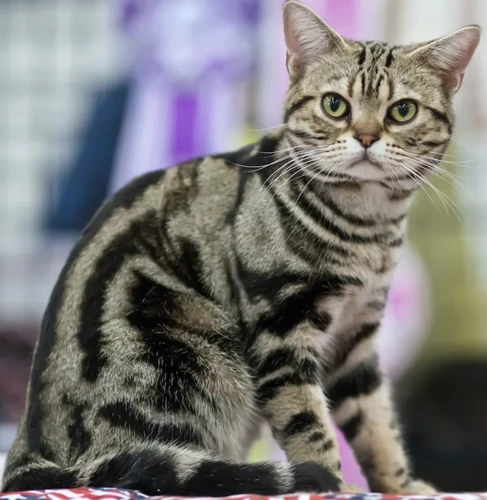
Caring for the health and well-being of your furry friend is essential to ensuring they live a long and happy life. As a cat parent, you want to do everything in your power to increase the life expectancy of your American Shorthair cat. Providing proper nutrition, exercise, preventative care, and environmental enrichment are all crucial aspects of ensuring your cat lives a long and healthy life. In this article, we’ll explore key nutritional guidelines, weight management and exercise tips, preventative care and hygiene practices, environmental enrichment techniques, and common health concerns for American Shorthair cats. Let’s dive in and learn how to keep your feline friend healthy and happy!
About American Shorthair Cats
American Shorthair Cats: Background and Characteristics
American Shorthair cats are a beloved breed that is known for their lovable personalities, easy care, and longevity. Originally known as Domestic Shorthairs, these cats were bred for their hardy nature and ability to adapt to different environments. Today, American Shorthairs are one of the most popular cat breeds in the United States, with a lifespan of up to 15 years or more with proper care.
Here are some key characteristics of American Shorthair cats:
| Physical Appearance |
|
| Temperament and Personality |
|
| Health Concerns |
|
Understanding the characteristics of American Shorthair cats is key to providing the best possible care to them. Additionally, understanding the factors that may impact their lifespan can help you make informed decisions about their care. You can learn more about the factors that affect the life expectancy of American Shorthair cats by checking out this article.
Key Nutritional Guidelines
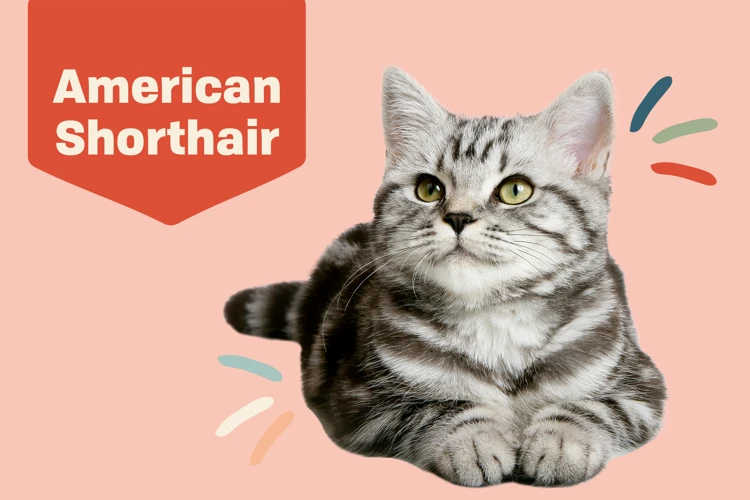
Nutrition plays a crucial role in increasing the life expectancy of American Shorthair cats. Providing your feline friend with a balanced diet and adequate nutrients is essential for maintaining their health and wellbeing. In this section, we will discuss some key nutritional guidelines to follow to ensure your American Shorthair cat leads a long and healthy life. It’s important to note that nutrition is just one part of the total equation when it comes to estimating the life expectancy of your cat. For more information on what impacts the life expectancy of American Shorthair cats, please check out our previous article on estimating the life expectancy of American Shorthair cats.
Choosing High-Quality Cat Food
Choosing high-quality cat food is the first and foremost step to increasing the life expectancy of American Shorthair cats. It is important to remember that not all cat foods are created equal. High-quality cat food should contain a proper balance of essential nutrients, including protein, fat, and carbohydrates, as well as essential vitamins and minerals. Here are some things to consider when selecting cat food:
- Choose cat food made from whole ingredients rather than processed or artificial ones.
- Check the food label for a statement from the Association of American Feed Control Officials (AAFCO) stating the food is nutritionally complete and balanced for cats.
- Look for named animal protein sources as the leading ingredients, such as chicken, turkey, or fish. Protein is crucial for maintaining a healthy body weight and muscle mass in cats.
- Avoid foods with fillers such as corn, soy, and wheat, as they do not provide the necessary nutrition and can cause digestive problems.
- Consider your cat’s age and activity level when selecting the appropriate food formula. Kittens have different nutritional needs than adult or senior cats, and active cats may require more calories than sedentary ones.
It is always a good idea to consult with your veterinarian to determine the best type and amount of food for your American Shorthair cat. Incorporating high-quality cat food into your cat’s daily diet can help reduce the risk of health problems such as obesity, diabetes, and urinary tract disease. Being mindful of what your cat eats is one of the most important ways you can help your feline friend live a long and healthy life.
Providing a Balanced Diet
A balanced diet plays a crucial role in promoting the overall health and longevity of American Shorthair cats. Without a proper balance of nutrients, your feline friend may be susceptible to various health issues. Here are some key elements to keep in mind when it comes to providing a balanced diet for your American Shorthair:
- Protein: Protein is critical for maintaining your cat’s muscles, skin, and hair. Look for a high-quality cat food that lists a protein source (such as chicken or fish) as the main ingredient.
- Fats: Fats provide a concentrated source of energy for your cat. They also help keep your cat’s skin and coat healthy. Choose cat foods that contain healthy fats like omega-3 and omega-6 fatty acids.
- Carbohydrates: While cats don’t require carbohydrates in their diet, they can provide a source of energy. Look for cat foods that contain easily digestible carbohydrates like rice or sweet potatoes.
- Vitamins and Minerals: Your cat also needs a variety of vitamins and minerals to stay healthy. Look for cat foods that are fortified with essential vitamins and minerals like calcium, iron, and vitamin A.
Keep in mind that every cat is unique and may have different dietary needs. Consult with your veterinarian about the best food options for your American Shorthair based on their age, activity level, and overall health.
Proper supplementation can also play a role in ensuring a balanced diet. However, it is important to consult with your veterinarian before giving your cat any supplements. Over-supplementation can lead to health complications.
By providing a well-balanced diet for your American Shorthair, you are helping to promote their overall health and longevity. Remember, a balanced diet is just one element in caring for your cat’s health. To learn more about other preventative care and health concerns for American Shorthairs, check out our article on Common Health Concerns for American Shorthair Cats.
Supplementing with Vitamins and Minerals
Supplementing your American Shorthair cat’s diet with vitamins and minerals can help ensure that they receive all the nutrients they need to live a long and healthy life. Here are some key vitamins and minerals that are essential for your cat’s health and wellbeing:
- Vitamin A: This vitamin is essential for maintaining healthy eyesight, skin, and coat.
- Vitamin D: Vitamin D is important for promoting bone health and regulating calcium and phosphorus levels in the body.
- Vitamin E: This vitamin is an antioxidant that helps protect cells from damage caused by harmful free radicals.
- Vitamin K: Vitamin K is important for blood clotting and maintaining healthy bones.
- B vitamins: B vitamins play a variety of roles in maintaining your cat’s health, including supporting healthy brain function, promoting healthy skin and coat, and aiding in digestion.
- Calcium: Calcium is important for maintaining strong bones and teeth, as well as regulating muscle and nerve function.
- Phosphorus: Phosphorus is essential for bone and teeth health, as well as energy metabolism.
- Taurine: Taurine is an essential amino acid that cats require for healthy heart function, vision, and digestion.
It’s important to note that while vitamins and minerals are essential for your cat’s health, too much of certain nutrients can be harmful. It’s always best to consult with your veterinarian about your cat’s nutritional needs and whether supplements are necessary. When supplementing your cat’s diet, be sure to choose high-quality supplements specifically designed for feline health.
Managing Weight and Exercise
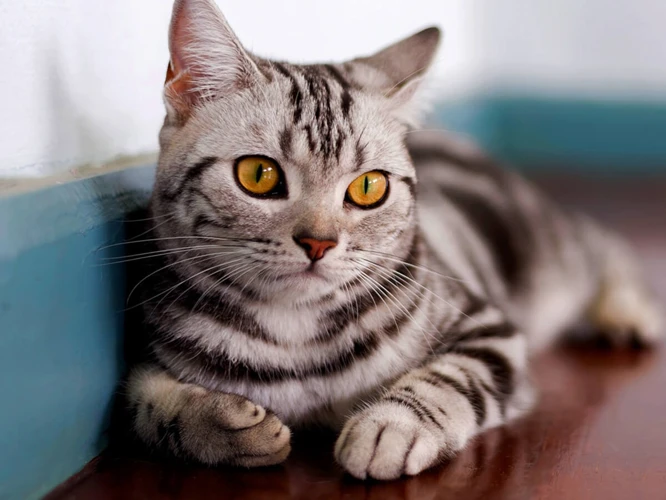
Maintaining a healthy weight is essential for American Shorthair cats to live long, healthy lives. Overweight and obese cats are at a higher risk for developing a variety of health conditions, including diabetes, heart disease, and joint problems. Exercise is also important for maintaining overall health and can help prevent obesity. However, finding the right balance of diet and physical activity for your cat can be a challenge. In this section, we will explore some tips for managing your cat’s weight and encouraging exercise in a way that is safe and effective.
Maintaining a Healthy Weight
Maintaining a healthy weight is crucial for the overall health and longevity of American Shorthair cats. A healthy weight ensures that cats are not at risk of developing obesity-related health problems such as diabetes, arthritis, and heart disease. Below is a table that outlines the ideal weight range for American Shorthair cats based on their age and gender:
| Male | Female | |
|---|---|---|
| Kitten | 2.5-4.5 lbs | 2-4 lbs |
| Adult | 9-12 lbs | 7-10 lbs |
| Senior | 8-11 lbs | 6-9 lbs |
To maintain a healthy weight for your American Shorthair cat, it’s important to monitor their diet and ensure they are not overeating. This can be accomplished by measuring their food portions and not leaving food out all day. Encouraging exercise through interactive toys and playtime can also help your cat maintain a healthy weight. If you suspect your cat may be overweight or underweight, it’s important to consult with your veterinarian to determine the best course of action.
Encouraging Exercise
Regular physical activity is an essential part of maintaining the health and wellbeing of American Shorthair cats. However, cats are known for their independent nature, which can make it challenging to encourage them to exercise regularly. Here are some tips for encouraging exercise in your American Shorthair cat:
Create a Safe and Stimulating Environment
Providing your cat with an environment that is safe and stimulating is the first step in encouraging exercise. This can be achieved by providing toys, climbing structures, and scratching posts. Consider incorporating puzzle toys or hiding treats in different areas of your home to encourage your cat to explore and move around.
Interactive Playtime
Playing with your cat is a great way to encourage exercise. Toys, such as feather wands or laser pointers, can help engage your cat in physical activity. Playtime should be a daily activity for at least 20-30 minutes per day. Avoid using your hands or feet when playing with your cat as this can encourage aggressive behaviors.
Encourage Climbing
Cats love to climb, so providing them with a safe and secure climbing structure is a great way to encourage exercise. You can purchase various cat trees or make your own using shelves or other household items.
Make Mealtime More Active
Instead of feeding your cat out of a bowl, consider using a puzzle feeder or hiding their food in different areas of your home. This will encourage your cat to move around and be more active while eating.
Consider Getting a Companion for Your Cat
If you have the time and resources, getting a companion for your American Shorthair cat can help encourage exercise. Playtime and physical activity are often more enjoyable when there is another cat to interact with.
Incorporating these tips into your cat’s daily routine can help encourage regular physical activity, which can lead to a healthier and happier American Shorthair cat.
Preventative Care and Hygiene
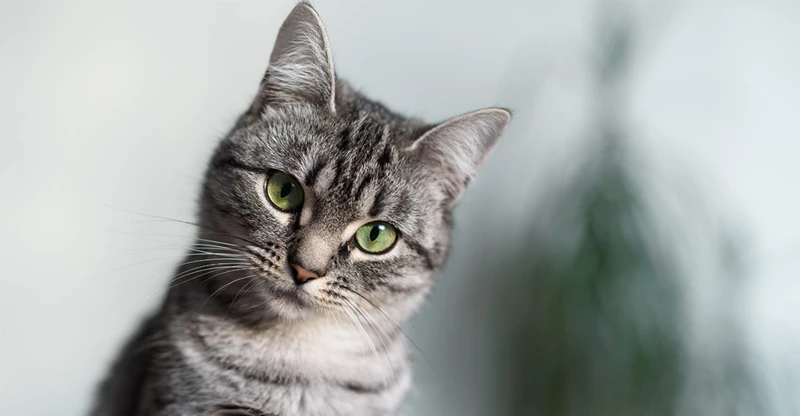
As with any pet, preventative care and hygiene are essential to maintain the long-term health of American Shorthair cats. Regular visits to the veterinarian, proper oral hygiene, and grooming are just a few of the ways that you can help ensure your cat lives a long and healthy life. In this section, we will explore the various preventative care and hygiene practices that should be incorporated into your cat’s routine.
Regular Check-Ups with the Veterinarian
Regular check-ups with the veterinarian are crucial for maintaining the overall health and longevity of American Shorthair cats. Here are some key reasons why these check-ups should never be skipped:
- Early Detection of Health Issues: American Shorthair cats are prone to several health problems, including urinary tract disease, obesity, and dental disease. Regular check-ups enable the veterinarian to detect the onset of these issues early on and prescribe appropriate treatment. Catching health issues early can prevent further complications that could reduce the lifespan of the cat.
- Preventative Care: In addition to identifying health problems, veterinarians can also administer preventative care measures. This includes vaccinations, parasite control, and dental cleanings. Preventative care can help avoid the onset of health issues that can reduce the life expectancy of American Shorthair cats.
- Professional Advice: Veterinarians have professional experience and expertise in feline healthcare. Consulting with them can provide invaluable advice on how to better care for your American Shorthair cat. They can help advise on specific dietary and lifestyle changes that can improve your cat’s overall health and lifespan.
Don’t wait for something to be wrong with your cat before taking it to the veterinarian. Regular check-ups can help your cat live a longer, healthier life. Remember, prevention is better than cure.
Oral Hygiene
Oral hygiene is an important aspect of cat care, as dental disease can cause discomfort, pain, and even lead to serious health issues. Here are some tips for maintaining good oral hygiene in American Shorthair cats:
| Tip | Description |
|---|---|
| Regular tooth brushing | Brushing your cat’s teeth regularly can help prevent the buildup of plaque and tartar. Use a toothbrush and toothpaste specially designed for cats, and make sure to start slowly and gently to avoid causing discomfort. Gradually increase the brushing time until you can brush your cat’s teeth for a full two minutes. |
| Dental treats and toys | Chew toys and treats designed to promote dental health can also help keep your cat’s teeth clean and healthy. Look for products that carry the Veterinary Oral Health Council (VOHC) seal, which indicates that the product has been tested and found to be effective in reducing plaque and tartar. |
| Regular dental check-ups | Just like humans, cats should have regular dental check-ups to ensure that their teeth and gums are healthy. Your veterinarian can perform a thorough dental exam and may recommend additional dental care such as a cleaning or other treatments if necessary. |
| Adding dental supplements to the diet | Supplements such as enzymes and probiotics can also help promote good oral health in cats. These products work by breaking down plaque and supporting healthy levels of oral bacteria. Ask your veterinarian about which supplements may be beneficial for your cat. |
Remember that maintaining good oral hygiene is important for your American Shorthair cat’s overall health and well-being. By following these tips and working closely with your veterinarian, you can help keep your cat’s teeth and gums in top condition.
Grooming and Skin Care
Grooming and skin care are essential for the health and comfort of American Shorthair cats. Regular grooming helps to remove loose hair and prevent hairballs, while skin care ensures that your cat’s coat remains healthy and free from irritants.
Grooming Tips
When grooming your American Shorthair cat, it’s important to use the right tools. A brush with soft bristles is ideal for removing loose hair and preventing matting. A comb with fine teeth can be used to remove tangles and knots. For cats with long hair, a slicker brush can be used to remove tangles and prevent matting.
Skincare Tips
To ensure the health of your cat’s skin, it’s important to keep their coat clean and free from irritants. Use a mild cat shampoo to bathe your cat, and avoid using human shampoos or soaps, which can dry out your cat’s skin and cause irritation.
It’s important to check your cat’s skin regularly for any signs of irritation or infection. Look for redness, swelling, or flaking, and consult your veterinarian if you notice any unusual symptoms. Regular grooming and skin care can help to prevent many common skin problems, such as hot spots, flea allergies, and ringworm.
Nail Care
Keeping your cat’s nails trimmed is also an important aspect of grooming. Overgrown nails can cause discomfort and even lead to infections or other problems. Use a clipper specifically designed for cats, and trim the nails carefully, avoiding the quick (the pink area in the center of the nail that contains blood vessels and nerves).
Grooming Schedule
How often you groom your American Shorthair cat will depend on their coat type and length. Longhaired cats will require more frequent grooming than shorthaired cats. Generally, it’s recommended to brush your cat at least once a week. Regular grooming will also help you establish a strong bond with your cat, and can be a relaxing and enjoyable activity for both of you.
| Grooming Tips | Skincare Tips | Nail Care |
|---|---|---|
| Use a soft-bristled brush to remove loose hair | Use a mild cat shampoo to bathe your cat | Trim your cat’s nails carefully and avoid cutting the quick |
| Use a comb with fine teeth to remove tangles and knots | Check your cat’s skin regularly for signs of irritation or infection | |
| A slicker brush can be used for long-haired cats to prevent matting | Avoid using human shampoos or soaps on your cat |
Environmental Enrichment
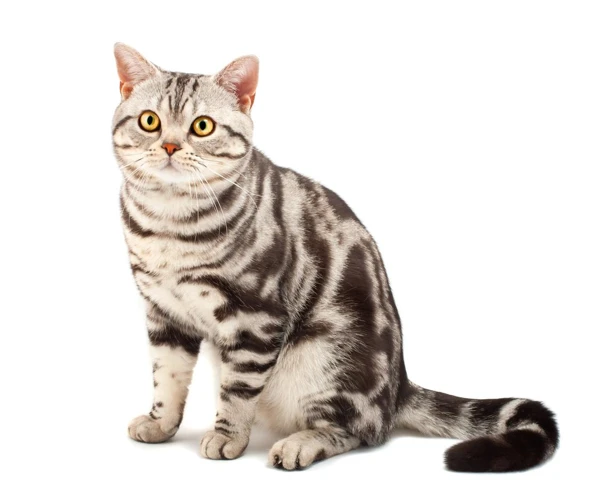
Cats are intelligent, curious, and playful animals that thrive when given opportunities for mental and physical stimulation. In addition to providing your American Shorthair cat with proper nutrition and preventative care, you should also consider ways to improve their environment to promote their well-being. This can be accomplished through a variety of environmental enrichment techniques, including providing mental stimulation and creating a cat-friendly home environment. Let’s dive deeper into these methods to ensure your feline companion leads a healthy and fulfilling life.
Providing Mental Stimulation
Cats, like their wild relatives, are natural hunters. Providing mental stimulation is an essential aspect of keeping American Shorthair Cats healthy and happy. Here are some ways to keep your cat’s mind engaged:
- Interactive toys: Toys that allow your cat to “hunt” and chase can be a great form of mental stimulation. Choose toys that are safe for your cat to play with unsupervised and avoid small parts that could be swallowed.
- Puzzle feeders: Puzzle feeders are toys where cats need to figure out a way to get their food out of the toy. These toys can help to slow down meal times while also providing mental stimulation. Ensure your cat’s puzzle feeder is appropriately sized, with no small parts that could be a choking hazard.
- Scratching posts: Scratching is a natural behavior for cats, and providing a scratching post will help to keep your cat’s mind engaged. Opt for a sturdy post that is tall enough for your cat to stretch and climb.
- Cat grass: Many cats enjoy nibbling on grass, which can provide a source of mental stimulation and potentially aid in digestion. However, be sure to choose a safe grass variety for your cat, and avoid plants that could be toxic.
- Rotation of toys: Offer a variety of toys, and regularly rotate them out to keep your cat’s interest levels high. This can include toys that make noise, toys with different textures, and toys that encourage interactive play with their human family.
By providing mental stimulation for your American Shorthair Cat, you can help prevent boredom and ensure your furry friend stays mentally and physically fit.
Cat-Friendly Home Environment
Creating a cat-friendly home environment can help to increase the life expectancy of American Shorthair cats. Ensuring that your home is a comfortable and safe place for your feline friend can reduce stress and promote mental stimulation. Here are some key factors to consider:
| Factor | Importance | Tips |
|---|---|---|
| Safe and Comfortable Sleeping Areas | Very Important | Provide different types of bedding options (eg. cat beds, blankets, and pillows) to allow your cat to choose what they prefer. Ensure these areas are placed in a spot away from high traffic areas. |
| Scratching Posts and Toys | Very Important | Provide multiple scratching posts and toys to keep your cat active and entertained. Place scratching posts near areas where your cat likes to lounge. |
| Access to Windows and Sunlight | Important | Make sure your cat has access to windows with plenty of natural light. This can improve their mood and physical health. Ensure windows are safe and secure so your cat cannot fall or escape. |
| Plenty of Vertical Space | Important | Cats love to climb and perch, so providing shelves and cat trees creates vertical space for your cat to explore. This also creates additional territory for your cat which can reduce stress. |
| Reducing Noise and Stressful Environments | Important | Reduce exposure to loud noises and sudden movements. Keep litter boxes and feeding areas in separate, quiet areas of the house. Create a calming environment by utilizing soft lighting, pheromone sprays, and comfortable bedding options. |
By implementing these key factors in your home environment, you can provide a safe, comfortable and healthy space for your American Shorthair cat to thrive. Remember to observe your cat’s behavior and preferences, and make adjustments as necessary to ensure the most optimal environment for your feline friend.
Common Health Concerns for American Shorthair Cats
As much as we love our furry feline friends, American Shorthair cats are not immune to health concerns. Being aware of common health conditions that affect this breed is essential for providing the best possible care. By staying informed and proactive, you can help your cat live a long and happy life by providing the necessary care and attention they need. Let’s delve into some of the most frequent health concerns American Shorthair cats may face and what you can do to prevent or manage them.
Urinary Tract Disease
Urinary tract disease is a common issue that affects many cats, including American Shorthair cats. It’s important for cat owners to be aware of the signs and symptoms of urinary tract disease so that they can seek treatment promptly. Some signs to watch out for include:
- Difficulty urinating
- Frequent urination
- Straining to urinate
- Blood in the urine
If you notice any of these symptoms in your American Shorthair cat, it’s essential to take them to the veterinarian right away. Urinary tract disease can be caused by several factors, including bladder stones, bacterial infections, and even stress. To prevent urinary tract disease in your American Shorthair cat, it’s important to provide them with a healthy diet that’s low in magnesium and to encourage them to drink plenty of water.
Another way to prevent urinary tract disease is by keeping the litter box clean and providing your cat with plenty of opportunities to urinate throughout the day. In some cases, your veterinarian may recommend a special diet or medication to prevent urinary tract disease. It’s important to follow your veterinarian’s recommendations closely to ensure that your American Shorthair cat stays healthy and happy.
One thing to keep in mind is that male cats are at higher risk for urinary tract disease, particularly if they are overweight or have other health issues. It’s crucial to keep your American Shorthair cat at a healthy weight and to watch for signs of potential health issues to prevent complications down the road. With proper care and attention, your American Shorthair cat can enjoy a long and healthy life free from urinary tract disease and other common health concerns.
Obesity
Like many other cat breeds, American shorthair cats are prone to obesity. In fact, obesity is one of the most common health concerns for cats of all breeds and ages. Obesity in cats can lead to a host of health problems, including diabetes, arthritis, and respiratory issues. It’s important to keep your American shorthair cat at a healthy weight. Here are some tips to prevent and manage obesity in your cat:
- Monitor their food intake: Keep track of how much food your cat is consuming each day, and make sure they’re not overeating. The amount of food your cat needs will depend on their age, weight, and activity level. Talk to your veterinarian to determine the appropriate portion size for your cat.
- Avoid free-feeding: Leaving a bowl of food out all day can lead to overeating and obesity. Instead, feed your cat small, measured meals throughout the day.
- Choose a high-quality, low-calorie cat food: Look for cat food that is specifically formulated for weight control. These foods are lower in calories but still provide all the nutrients your cat needs.
- Limit treats: Treats should make up no more than 10% of your cat’s daily caloric intake. Stick to healthy treats like small pieces of cooked chicken or fish.
- Encourage exercise: Physical activity is important for maintaining a healthy weight in cats. Play with your cat regularly and provide them with toys that encourage exercise.
- Consider a weight loss plan: If your cat is already overweight, talk to your veterinarian about a weight loss plan. This may include a special diet and exercise regimen to help your cat shed the extra pounds safely.
By following these tips, you can help your American shorthair cat maintain a healthy weight and prevent obesity-related health problems. Remember to always consult with your veterinarian before making any changes to your cat’s diet or exercise routine.
Dental Disease
Maintaining proper dental hygiene is crucial for the overall health of American Shorthair Cats, as dental disease is a common health concern for cats. Here are some tips to help prevent dental disease in your furry friend:
- Regular Dental Check-Ups: It is recommended to have your cat’s teeth checked by a veterinarian at least once a year. This will allow for early detection and treatment of any dental problems.
- Toothbrushing: Cat toothbrushes and toothpaste are available at most pet stores. Brushing your cat’s teeth regularly, ideally at least once a day, can help remove plaque and bacteria buildup. Start by introducing toothbrushing slowly and gradually increase the frequency.
- Dental Treats and Toys: Dental treats and toys can help keep your cat’s teeth clean and healthy. These treats and toys are designed to remove plaque and tartar buildup through chewing and can also provide mental stimulation. Look for products that have the Veterinary Oral Health Council (VOHC) seal of approval.
- Diet: A balanced diet can also help prevent dental disease. Dry food helps clean the teeth by removing plaque as the cat chews.
- No Human Food: Avoid feeding your cat human food, especially sugary or fatty foods. These types of foods can contribute to plaque buildup.
- Watch for Signs: Keep an eye out for signs of dental disease, such as bad breath, swollen gums, and difficulty eating. If you notice any of these signs, schedule an appointment with your veterinarian right away.
By following these tips, you can help prevent dental disease in your American Shorthair Cat and ensure that they live a healthy and happy life. Remember to schedule regular dental check-ups with your veterinarian and to provide your cat with proper dental care and hygiene.
Conclusion
In conclusion, ensuring the long and healthy life expectancy of your American Shorthair cat requires a combination of various factors. First and foremost, providing your cat with a high-quality and balanced diet is crucial. This means selecting the appropriate cat food that is rich in all essential nutrients, incorporating wet food into their diet, and giving them adequate amounts of water.
Secondly, maintaining your cat’s weight and encouraging exercise is vital. Overweight cats are at a higher risk of health complications. Therefore, managing their weight through portion control and regular exercise can help prevent obesity, which is a common health issue for this breed.
Regular veterinary check-ups, regular oral hygiene, and grooming are also essential preventative measures. This includes brushing their teeth, providing commercial dental products or treats and paying attention to their grooming. It can help avoid future health concerns such as gum disease and skin problems.
Environmental enrichment is also important for the wellbeing of your American Shorthair cat. This entails providing mental stimulation and designing a cat-friendly home environment that is both enjoyable and comfortable for them. This can include engaging them in playtime, providing toys for them to play with, and creating safe spaces for them to retreat to.
Finally, understanding the most common health concerns for American Shorthair cats, such as urinary tract disease, obesity, and dental disease, will allow you to recognize potential problems and address them before they become serious.
In essence, following the nutrition and lifestyle tips mentioned in this article can help in extending the life expectancy of your American Shorthair cat while ensuring that their behavioral and physical wellness is taken care of. Remember, the key to a healthy and happy cat is paying attention to their unique needs, providing adequate care, and promoting an overall healthy lifestyle.
Frequently Asked Questions
What is the average lifespan of an American Shorthair cat?
The average lifespan of an American Shorthair cat is around 12 to 16 years.
What type of food should I feed my American Shorthair cat?
You should feed your American Shorthair cat high-quality cat food that is rich in protein and low in carbohydrates.
How much should I feed my American Shorthair cat?
You should follow the feeding guidelines on the cat food packaging based on your cat’s weight, age, and activity level.
How often should I take my American Shorthair cat to the veterinarian?
You should take your American Shorthair cat to the veterinarian for regular check-ups at least once a year.
What type of exercise do American Shorthair cats need?
American Shorthair cats need daily exercise, which can include playing with toys, climbing, and scratching posts.
What are some signs that my American Shorthair cat may be overweight?
Signs that your American Shorthair cat may be overweight include difficulty moving, excessive sleeping, and a lack of energy.
What can I do to improve my American Shorthair cat’s dental health?
You can improve your American Shorthair cat’s dental health by providing them with chew toys, regularly brushing their teeth, and feeding them dental treats.
Why is mental enrichment important for American Shorthair cats?
Mental enrichment is important for American Shorthair cats as it can provide them with entertainment, prevent boredom, and reduce stress.
What are some signs that my American Shorthair cat may have urinary tract disease?
Signs that your American Shorthair cat may have urinary tract disease include frequent urination, straining to urinate, and blood in the urine.
What should I do if I suspect that my American Shorthair cat may have a health problem?
You should take your American Shorthair cat to the veterinarian as soon as possible if you suspect that they may have a health problem.

